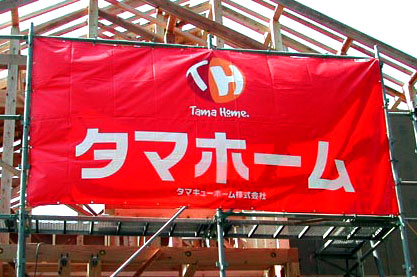
タマホーム - TamaHome
This was an advertisement for a construction/real estate company. The "ホーム" part is clearly a loanword, but Tama is a section of Tokyo and would normally be written in kanji (多摩市). I think it's written in カタカナ not only to make the company's whole name カタカナ (rather than a mix) and also to highlight the company's modernity/edginess. Their site shows homes which are all of a very modern and bold style, so their choice to write their name in a nontraditional style reflects this.
This came from the ad for the Japanese version of The Incredibles, seen above. It is a loanword from English, and I think it was used here to establish a connection between the English and Japanese versions of the movie. There is a Japanese word for 'incredible,' but this emphasizes that they are the same movie.
I think textbooks explain katakana in different ways because it is such a broad topic that there isn't a "best" way to teach it. Our textbook first introduced it for its use in loanwords, which I think is a good approach because that is where a beginner will see katakana most often. Words like アメリカ and コーヒー are very good words to know when beginning Japanese, whereas onomatopoeia is a much more complicated topic that wouldn't concern most beginners.

You did a good job explaining the loanword function of Japanese, and I liked the comment you made about katakana having the effect of making something seem more modern/bold, since that’s a more subtle usage katakana can sometimes have. You touched on katakana’s function as onomatopoeia a little at the end, too, but one thing you didn’t mention was that it can also be used simply for emphasis, to draw the eye in advertisements and such.
ReplyDeleteよくがんばりました!
あー、ざんねん!
ReplyDeleteタマホーム's "タマ" comes from the name of the founder of the company (Mr.TAMAKI).
Now you know that Japanese has a lot of homonyms.
But you did a good job.よくがんばりました。
ああ、ありがとうございます!
ReplyDeleteI didn't know that so when さと先生 said in class that Tama was a part of Tokyo, I just assumed. It's interesting how this タマ also wouldn't normally be written in カタカナ.
You picked interesting examples! I feel like a lot of company names in Japan are written in katakana, but maybe that's just me. Is it that interesting to be seen as "modern"?
ReplyDeleteI wonder if the fact that katakana are perceived as "edgy" or "modern", even though they are about as old as katakana and used to be just as widely used, has to do with the fact that Western things are perceived that way and katakana are also used for loan words.
Also, I'm curious about the fact that they changed the movie's name from The Incredibles to Mr Incredible (isn't it quite strange? maybe they just wanted to have some roman characters in there? maybe having two words in katakana next to each other was confusing?)
おもしろいとおもいます!
ReplyDeleteI really like your analysis of the タマホーム example; I was especially confused about why they might choose to use ホーム instead of 家, but I think your explanation makes sense that they want to emphasize a certain modernity and maybe Western Culture as well. I also like your comment at the end stating that although many textbooks differ in how the explain カタカナ there is no best way to define it and all of its uses.
アレン
I am curious about the fact that they keep "Mr." in English (with little katakana above it) and not turn everything into katakana or English. Maybe they can't make up their mind?
ReplyDeleteI think that the way some textbooks initially introduce katakana as a script used for loan words without mentioning its other functions is to save us some confusion. I would still prefer to have overview that it has more functions right from the beginning though.
I think it's good that textbooks introduce the loan words first to beginning Japanese students. The many uses of katakana can be confusing and it's good to first be able to recognize loan words as they are used in Japanese. Even for Native English speakers, it's sometimes difficult to figure out what English word is being used. I wish textbooks would later mention the edgy or cool connotation that katakana sometimes carries.
ReplyDeleteIt's interesting to note that sometimes the English name of a movie is katakana-ized when released in Japan, and other times a Japanese name is used instead. Could this have something to do with the content of the movies? I wonder what affects the decision.
会社の名前についての分析は面白かったですよ。やっぱりカタカナを使うともっとモダンになりますね。よくできました。